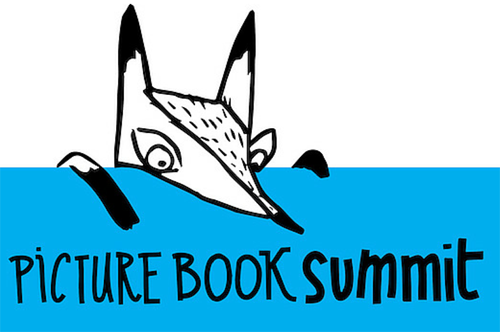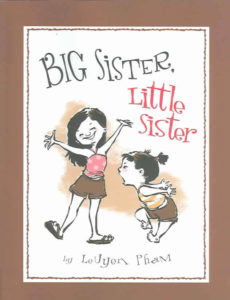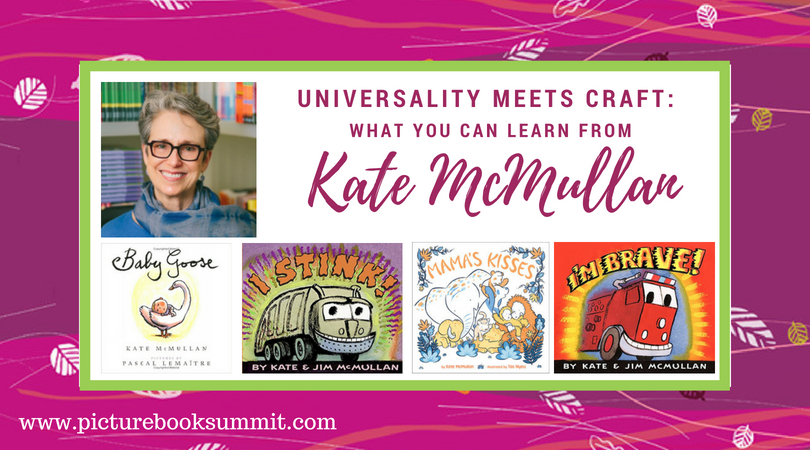Many of us may know LeUyen Pham (pronounced “win”) for her amazing illustrations in Princess in Black, Vampirina Ballerina, or The Boy Who Loved Math. In this post, we are going to take a closer look at the books LeUyen wrote and illustrated herself because she uses some unique structures in her own writing.
Author Study – LeUyen Pham
How to Build a Book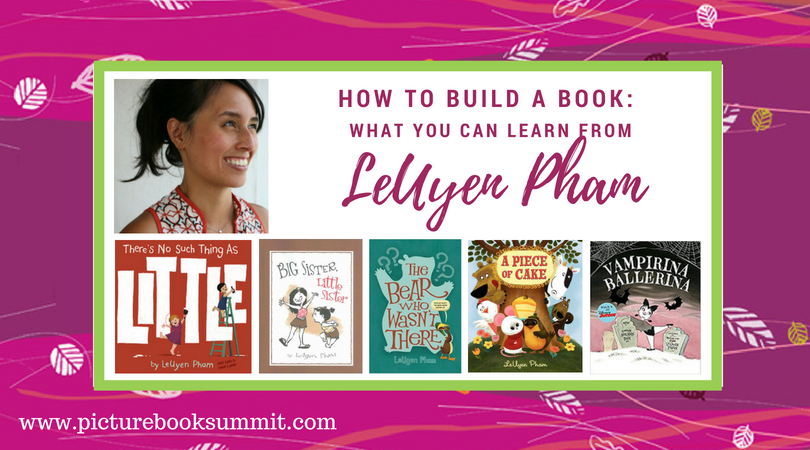
How to Build a Book: 4 Things You Can Learn from LeUyen Pham
Journey
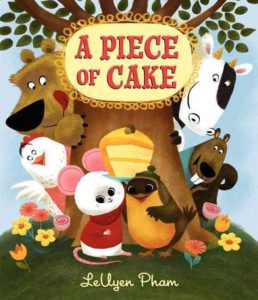
In a journey story, the main character travels from one place to another, which gives a broad structure for the action of the book. With each stop, the journey gets more interesting or complicated. Journey books also give a sense of visual movement in each spread because the character is going somewhere new and meeting someone different.
LeUyen Pham’s A PIECE OF CAKE is a journey book. Mouse makes a birthday cake for Little Bird. He goes on a journey to Little Bird’s house, but on the way, he meets other animals who see his cake and offer to trade him a trinket for a piece of cake. Things get worse as the journey goes forward because Mouse ends up at Little Bird’s house with no cake but a handful of gadgets.
This book provides a structure, and at first glance, it seems predictable, but then it’s not. The gadgets Mouse gets are unique as are the way he uses them in the end to get what he wants.
Take a look at this book for its journey structure and its fabulous twists and humor.
Compare and Contrast
A compare/contract structure usually is about two things and each of those things is compared, sometimes back and forth, in a picture book. BIG SISTER, LITTLE SISTER is a compare and contrast structure. It seesaws between the big sister and the little sister and their roles. The little sister talks about all the ways she is like her big sister, but with a little bit of spin on how she’s different. In the story, the text is very simple, but the illustrations allow her to bring a lot of detail to the story.
This particular book doesn’t have the typical structure of problem and solution, but it does have gentle tension between the two characters.
Concept Books
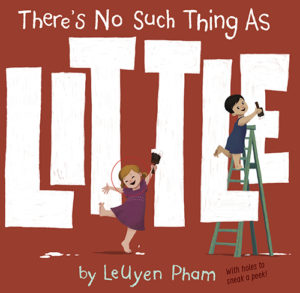 Concept books usually present something to learn, such as numbers or shapes or colors. But they can also present a concept that is not as easy to quantify.
Concept books usually present something to learn, such as numbers or shapes or colors. But they can also present a concept that is not as easy to quantify.
In THERE’S NO SUCH THING AS LITTLE, it plays with the idea of smallness and how our perspective sometimes skews what we see. With die-cut holes in the pages, we see something we perceive to be small through a die-cut. Then when we turn the page, we see it is part of something much bigger or it’s something small with great importance.
Each object we look at is revealed to the reader over two spreads. The text is very simple, but again, the illustrations are rich. We see the small thing on the first page through the die cut. When we turn the page, we see it in context of something bigger. This book depends on page turns for the big reveal.
Meta
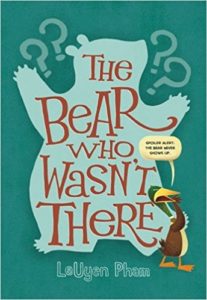 Meta books acknowledge the structure of a story. A character may even acknowledge they are in a story and realize they are playing with its structure. In THE BEAR WHO WASN’T THERE, the narrator and the animal characters all realize they are part of a story. The duck keeps trying to interrupt the story and make it about him. Sings are left for the reader and the narrator talks to the characters.
Meta books acknowledge the structure of a story. A character may even acknowledge they are in a story and realize they are playing with its structure. In THE BEAR WHO WASN’T THERE, the narrator and the animal characters all realize they are part of a story. The duck keeps trying to interrupt the story and make it about him. Sings are left for the reader and the narrator talks to the characters.
It’s full of humor and word play along with being meta.
Take a look at LeUyen Pham’s picture book structures. Journeys, Compare and Contrast, Concept Book, and Meta are all unique structures. Try one of the structures out for an idea you want to write. It might be a good exercise and take your story to places you might not have thought of before.
Learn More from LeUyen
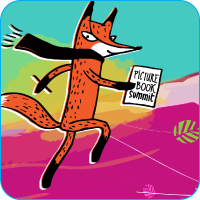
At Picture Book Summit 2018, LeUyen will be presenting “Storytelling vs. Story Showing: Balancing Text and Illustration in Picture Books.” She’ll discuss the critical balance between text and illustration in picture books, both as an author/illustrator and as an illustrator only. In addition, LeUyen will address the need to match the style of illustrations to the particular story, whether or not every story needs an illustration sub-text, and what she wishes authors knew about leaving room for illustrators to contribute their artistic vision.
Don’t miss the chance to hear from LeUyen directly and ask questions, all from the comfort of home! Check out LeUyen’s presentation as well as our other workshops coming October 6th on our Program Page.
 Marcie Flinchum Atkins has been an elementary educator for more than 20 years. She is currently a PYP/IB public school librarian in Falls Church, Virginia by day and writes books for children in the wee hours of the morning. She has an M.A. and M.F.A. in Children’s Literature from Hollins University. She blogs about mentor texts at www.marcieatkins.com. You can follow her on Twitter and Instagram @MarcieFAtkins.
Marcie Flinchum Atkins has been an elementary educator for more than 20 years. She is currently a PYP/IB public school librarian in Falls Church, Virginia by day and writes books for children in the wee hours of the morning. She has an M.A. and M.F.A. in Children’s Literature from Hollins University. She blogs about mentor texts at www.marcieatkins.com. You can follow her on Twitter and Instagram @MarcieFAtkins.
